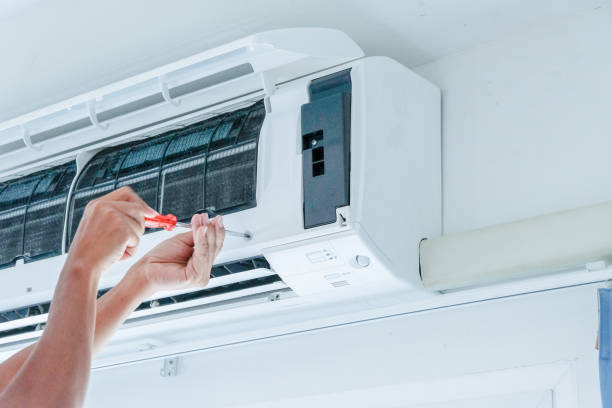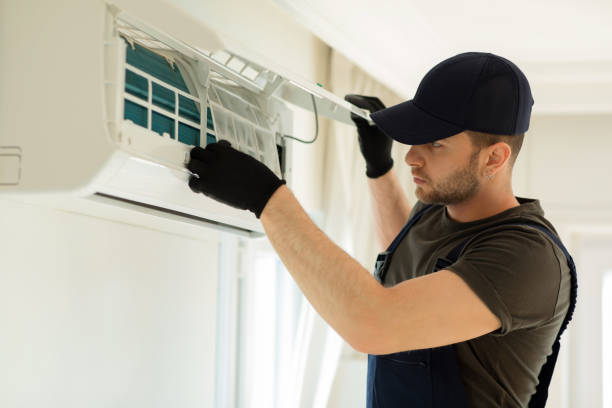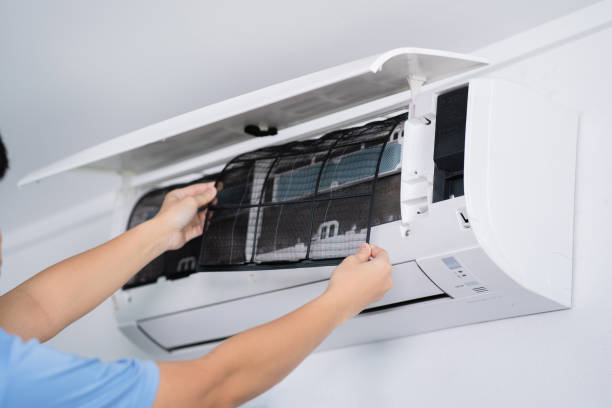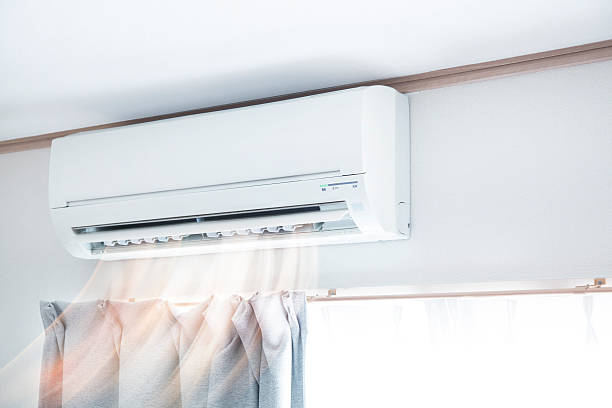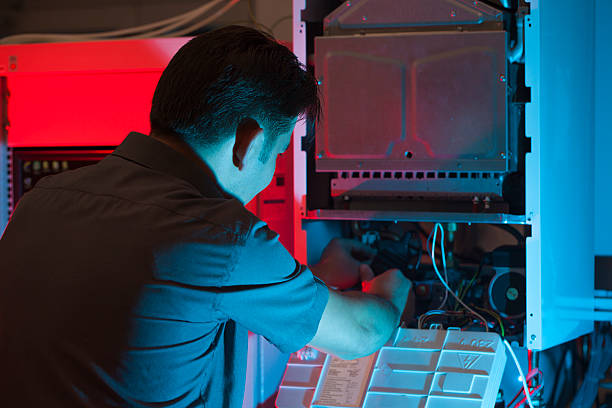
A furnace is a vital component in keeping your home comfortable, especially during the cold months. However, like any mechanical system, it can develop issues over time. Knowing when your furnace requires immediate repair can prevent small problems from escalating into costly repairs or replacements.
Strange Noises Coming from Your Furnace
Unusual sounds are often one of the first indicators that something is wrong with your furnace.Banging or clanking: Could indicate loose or broken components.Squealing: Often caused by a worn-out blower belt or motor bearing.Rattling: May suggest internal parts are loosening.Humming: Could point to electrical issues within the system.
If you notice any of these sounds, it’s best to contact a qualified HVAC technician promptly.
Inconsistent Heating Throughout Your Home
Uneven heating is another common sign that your furnace may be failing. When certain rooms are too hot while others remain cold, it could mean: – Blockages in air ducts. – A malfunctioning thermostat. – An aging furnace struggling to distribute heat evenly.
Addressing these issues early on will help maintain a consistent and comfortable indoor temperature.
Increasing Energy Bills
If you observe a sudden spike in your energy bills without significant lifestyle changes, your furnace may not be operating efficiently. Potential causes include: 1. A dirty air filter restricting airflow. 2. Worn-out components requiring more energy to function. 3. A system that’s nearing the end of its lifespan.
Regular maintenance can reduce energy waste and extend the life of your furnace.
| Symptom | Potential Cause | Suggested Action |
| Strange noises | Loose parts, worn bearings | Schedule an inspection |
| Uneven heating | Duct blockages or old equipment | Clean ducts; consider upgrades |
| Higher energy bills | Dirty filters or inefficiency | Replace filters; perform tune-up |
Short Cycling
Short cycling happens when your furnace turns on and off frequently without completing a full heating cycle. This behavior could indicate: – An improperly sized unit for your home. – Overheating due to restricted airflow. – Thermostat malfunctions sending incorrect signals.
Short cycling increases wear and tear on the system and should be addressed quickly to avoid further damage.
Unusual Smells
Foul odors emanating from your furnace could signal: – Accumulated dust burning off at the start of the season (this usually dissipates quickly). – Gas leaks, which require immediate attention for safety reasons.
Always act promptly if you smell gas by evacuating the premises and contacting emergency services before calling an HVAC professional.
Weak Airflow
Reduced airflow from vents often suggests that something within the system is obstructed or damaged. Common culprits include: 1. Clogged air filters preventing proper circulation. 2. Issues with blower mechanisms responsible for pushing heated air through vents. 3. Problems with duct systems leaking conditioned air before it reaches rooms.
Final Thoughts on Furnace Repairs
Being proactive about identifying signs of trouble can save you money on repairs and keep your home comfortable year-round. If you observe any of these warning signs in your furnace, don’t hesitate to consult with an experienced HVAC specialist who can provide timely solutions tailored to meet your exact needs.
Identifying When You Need HVAC Installation Woodbridge VA for Furnace Repairs
A properly functioning furnace is essential for maintaining comfort and safety in your home. However, like any mechanical system, furnaces can experience issues that may require prompt attention. Recognizing the early signs of furnace problems can save you from unexpected breakdowns, costly repairs, or even the need for a full replacement. Below is a detailed guide to help you identify when your furnace might need immediate repair.
If your furnace is running but your home still feels cold or some rooms are not heating evenly, this could point to underlying issues such as:
– Blocked or dirty air filters: Reduced airflow due to clogged filters prevents proper heating distribution.
– Ductwork leaks: Damaged ducts can cause heat loss before it reaches certain areas of your home.
– Malfunctioning blower motor: A failing motor may reduce the ability of the system to push warm air effectively.
Regular maintenance and cleaning can prevent these problems from escalating.
Hearing loud bangs, screeching, rattling, or other unusual sounds during operation often signals mechanical issues within the system. Common causes include: – Loose components inside the furnace housing. – Worn-out belts causing squealing noises. – Ignition problems leading to mini-explosions (causing loud bangs).
Addressing these noises quickly prevents further wear and tear on your system.
When a furnace turns on and off repeatedly (referred to as short cycling), it indicates potential problems such as: – A faulty thermostat sending incorrect signals. – An overworked heat exchanger due to restricted airflow. – Improper sizing of the unit for your home.
Short cycling not only stresses the equipment but also increases energy usage unnecessarily.
If you notice an unexplained spike in your utility bills during colder months, this could suggest reduced efficiency caused by:
| Potential Issue | Impact on Efficiency | Solution | |——————————–|———————————————–|————————————| | Dirty air filters | Forces system to work harder | Replace every 1–3 months | | Aging components | Decreases overall performance | Conduct routine inspections | | Burner or pilot light trouble | Inconsistent heating output | Professional cleaning/repair |
By addressing these inefficiencies early, you can save money on energy costs over time.
A cracked heat exchanger can release carbon monoxide—a dangerous gas that poses serious health risks. If your detector signals elevated levels of carbon monoxide: – Shut off the furnace immediately. – Ventilate your home by opening windows and doors. – Contact an HVAC professional for emergency repairs.
Routine inspections ensure safe operation and prevent hazardous situations like gas leaks.
The color of a pilot light provides insight into combustion efficiency and safety conditions within the furnace: – Blue flame: Indicates optimal combustion with no significant gas mixture issues.Yellow flame: Could signal incomplete combustion often caused by improper ventilation or dirt build-up in burners.
A yellow flame should be addressed promptly by a qualified technician to ensure safe operation.
Recognizing these common warning signs allows homeowners to take proactive steps toward resolving minor issues before they lead to costly repairs or complete system failures. Ensuring timely maintenance not only prolongs the lifespan of your equipment but also ensures comfort and safety for everyone in your household year-round.
Diagnosing Furnace Issues: Tips from an HVAC Contractor Woodbridge VA
When your furnace fails to ignite, it can be a frustrating and potentially serious issue, particularly during colder seasons. Diagnosing the problem requires a systematic approach to identify the underlying cause. Below is a comprehensive guide to help you address this issue effectively.
Top Reasons to Call for Emergency HVAC Service Woodbridge VA
- Pilot Light Problems
Older furnaces often rely on pilot lights for ignition. If the pilot light is out or not functioning properly, the furnace won’t ignite. - Dirty or Clogged Burner
Over time, burners can accumulate dirt and debris, which can prevent them from igniting properly. - Ignitor Failure
Modern furnaces generally use electronic ignitors instead of pilot lights. If the ignitor is cracked or damaged, it won’t create the spark needed for ignition. - Faulty Thermostat Settings
A thermostat that’s set incorrectly or malfunctioning may prevent your furnace from turning on or igniting as expected. - Gas Supply Issues
If gas isn’t reaching the furnace properly due to a closed valve or supply interruption, ignition won’t occur.
Step 1: Check Your Thermostat
- Ensure the thermostat is set to “heat” mode and adjusted above room temperature.
- Replace batteries in programmable thermostats if applicable.
- Examine if there are any error codes displayed (if it’s an advanced model). Refer to the user manual for more information.
Step 2: Inspect the Pilot Light or Ignitor
- For furnaces with a pilot light: Confirm whether it’s lit. If it’s out, carefully try relighting it following manufacturer guidelines.
- For furnaces with an electronic ignitor: Inspect for visible cracks or signs of wear and tear.
Step 3: Evaluate Airflow and Filters
Restricted airflow can cause safety mechanisms in your furnace to prevent ignition: – Replace dirty filters. – Clear obstructions around vents and registers.
Step 4: Check Gas Supply
Ensure gas valves are open: – Confirm that other gas appliances (like stoves) are operational, indicating no overall gas supply issue. – Contact your gas provider if you suspect service interruptions.
Step 5: Examine Safety Switches
Modern furnaces include built-in safety switches that shut off operation if panels are open or if overheating risks are detected: – Make sure all panels are securely in place. – Test limit switches using professional-grade tools (or consult an HVAC technician).
| Issue | Description | Requires Professional? |
| Faulty Control Board | Malfunctioning circuit boards may need replacement | Yes |
| Gas Valve Malfunction | Repairs involving gas components must meet safety standards | Yes |
| Complex Wiring Issues | Electrical repairs require expertise | Yes |
Attempting DIY repairs on these complex systems might inadvertently worsen problems or pose safety risks like carbon monoxide leaks.
Key Takeaways
Diagnosing why your furnace isn’t igniting involves careful evaluation of common issues like thermostat settings, dirty components, gas flow disruptions, and safety mechanisms. Simple tasks such as replacing filters or relighting a pilot light may resolve minor issues; however, more technical problems should always be handled by professionals equipped with proper tools and expertise. Regular maintenance can prevent many ignition problems before they occur—consider scheduling annual inspections to ensure long-term efficiency for your heating system.
This guide focuses on how HVAC system repairs can directly impact air quality and what steps you can take to improve it.
Your HVAC system is designed not only to regulate the temperature of your home but also to filter and circulate clean air.
- Dirty or clogged filters: When filters are not replaced regularly, dust, pollen, and other contaminants can circulate through the air instead of being captured.
- Leaky ductwork: Damaged ducts can allow unfiltered air from attics or crawl spaces to mix with clean indoor air.
- Moisture buildup: A malfunctioning HVAC system may lead to condensation issues, promoting mold growth that negatively impacts IAQ.
- Poor ventilation: Insufficient airflow within the system can lead to stale air that traps pollutants inside your home.
If you’re noticing any of these signs in your home, it might indicate that your HVAC system needs repair or maintenance:
– Persistent dust accumulation on surfaces even after cleaning.
– Increase in allergy symptoms like sneezing or itchy eyes when indoors.
– Unusual odors coming from vents or ductwork.
– Noticeable humidity imbalances—air feels too damp or too dry. – Hearing unusual sounds like rattling or hissing coming from the unit.
- Check whether filters are visibly dirty or clogged.
- Replace filters every 1–3 months depending on usage and manufacturer recommendations.
- Look for visible holes or tears in ductwork.
- Consider professional duct cleaning if debris buildup is significant.
- Use a hygrometer to measure indoor humidity; levels should ideally range between 30%–50%.
- Repair dehumidifiers or humidifiers integrated into the HVAC system if needed.
- Inspect components such as vents and evaporator coils for visible mold growth.
- Have professionals address serious mold-related issues as they can spread contaminants throughout your home.
Regular maintenance is key to ensuring both a well-functioning HVAC system and cleaner air indoors.
| Maintenance Task | Frequency | Why It’s Important |
| Replace HVAC Filters | Every 1–3 months | Keeps contaminants from circulating indoors |
| Schedule Professional Inspections | Annually | Detects inefficiencies early |
| Clean Vents and Registers | Quarterly | Removes dust buildup |
| Seal Ductwork | As needed | Prevents unfiltered outdoor air infiltration |
Additionally, consider adding devices like whole-house purifiers or UV germicidal lights compatible with your existing HVAC unit for enhanced filtration capabilities.
When Should You Call an Expert?
- Persistent airflow problems despite regular maintenance efforts.
- Unexplained odors suggesting mold or mildew contamination within the unit.
- Visible damage such as cracked heat exchangers which may release harmful gases into the air (e. g. , carbon monoxide).
By addressing these issues promptly with an experienced technician, you ensure both optimal performance of your equipment and healthier breathing conditions for occupants in your space.
The Cost of a New Central Air Conditioner and When to Opt for Repair Instead
Understanding when to repair or replace your central air conditioner is essential to maintaining efficiency and controlling costs. In this guide, we explore the factors that impact repair versus replacement decisions, the typical cost of a new unit, and how to assess the best course of action for your HVAC system.
Several factors determine whether you should repair or replace your central air conditioner.
- Age of the Unit: Most central air conditioners last 10–15 years. If your unit is nearing the end of its lifespan, frequent repairs may no longer be cost-effective.
- Repair Costs: A general rule of thumb is the “50% rule. ” If the cost of repairs exceeds 50% of the price for a new unit, replacement is often more economical.
- Energy Efficiency: Older systems tend to be less energy-efficient than newer models. Replacing an outdated unit with an ENERGY STAR-certified system can significantly lower utility bills.
- Refrigerant Type: Units relying on R-22 refrigerant (phased out in recent years) are expensive to maintain due to limited availability, making replacement a better option.
The cost of installing a new central air conditioner varies based on several factors such as brand, size, and installation complexity.
| Component | Average Cost Range |
| Unit Price (2–5 ton systems) | $3,000–$8,000 |
| Installation Labor | $1,500–$3,000 |
| Ductwork Modifications | $500–$2,000 |
| Additional Features (e.g., smart thermostats) | $200–$800 |
In total, most homeowners can expect to pay between $5,000 and $12,000for a full system replacement.
- Frequent breakdowns or high repair bills
- Inconsistent temperatures or poor cooling performance
- Excessive noise during operation
- Rising energy bills despite routine maintenance
- Outdated SEER (Seasonal Energy Efficiency Ratio) rating below current efficiency standards
If your AC system is relatively new or if issues are minor, repairs may suffice.
- Small refrigerant leaks that can be fixed affordably
- Problems with electrical connections or capacitors
- Replacing worn-out components like fans or coils without extensive labor
Repairs typically range from $150 to $1,500, depending on complexity.
Deciding between repair and replacement isn’t always straightforward.
- Diagnostic tests identifying core issues
- Detailed cost estimates for both options
- Advice tailored to your system’s condition and age
Investing in regular inspections also helps avoid unexpected breakdowns while optimizing long-term performance.
By weighing costs against benefits and considering professional input when needed, you can ensure your central air conditioning system operates efficiently while meeting budgetary constraints.
When to Replace or Repair Your Heat Pump for Optimal Performance
Determining whether to repair or replace your heat pump is a critical decision that can affect the comfort and energy efficiency of your home. Heat pumps are designed to provide reliable heating and cooling, but over time, wear and tear can impact their performance. Below, we’ll explore key considerations for deciding between repair and replacement, signs to watch for, and the benefits of making the right choice.
Signs Your Heat Pump May Need Repair
Sometimes, repairing your heat pump is sufficient to restore its functionality.
- Inconsistent Temperatures: If certain areas of your home are too hot or cold, this might indicate a malfunction in the system.
- Strange Noises: Grinding, rattling, or squealing sounds often signal loose components or motor issues.
- Unusual Cycling: Short cycling (frequent turning on and off) may suggest thermostat problems, refrigerant leaks, or compressor failure.
- Rising Energy Bills: A sudden increase in utility costs could point to decreased efficiency caused by worn parts or duct leaks.
- Ice Buildup: If ice forms on the outdoor unit during normal operation (and not just in winter), there could be an airflow restriction or refrigerant issue.
For these issues, professional diagnostics can help determine whether targeted repairs will resolve the problem effectively.
When Replacement Becomes Necessary
Repairs may not always be a long-term solution. In some cases, replacing your heat pump is more cost-effective and beneficial overall.
- The lifespan of most heat pumps ranges from 10–15 years with proper maintenance.
- If your system is near or beyond this age range and requires frequent repairs, replacing it could save money over time.
- Multiple breakdowns within a short period indicate an aging system likely nearing the end of its lifecycle.
- Spending repeatedly on parts like compressors or coils for an older unit often isn’t worth it.
- Older systems are less efficient compared to modern models that meet current energy standards.
- Upgrading could significantly reduce heating and cooling costs while improving comfort.
- Experts recommend replacing a unit if repair costs exceed 50% of the price of a new installation.
Cost Comparison Table
| Factor | Repair Cost Range | Replacement Cost Range |
| Minor Component Repair | $150–$500 | Not Applicable |
| Major Part Replacement | $1,000–$2,500 | Not Applicable |
| Full System Replacement | Not Applicable | $4,000–$10,000+ |
Note: Prices vary based on location and specific system features.
Advantages of Replacing Your Heat Pump
- Improved Efficiency: Modern units often have higher SEER (Seasonal Energy Efficiency Ratio) ratings.
- Warranty Coverage: New systems come with warranties that protect against unexpected failures.
- Eco-Friendliness: Advanced models use eco-friendly refrigerants with lower environmental impact.
- Enhanced Comfort Features: Many newer systems feature variable-speed motors and smart thermostats for precise control over indoor climate.
Final Thoughts
Careful evaluation is key when deciding between repairing or replacing your heat pump. Consulting a qualified HVAC technician can help assess your system’s condition and provide guidance tailored to your needs and budget. Investing in timely repairs or upgrades ensures optimal performance while maintaining energy efficiency throughout the year.
Prevent Major Repairs with Expert AC Repair Woodbridge VA for HVAC Electrical Components
Proper inspection and maintenance of electrical connections and components within your HVAC system are essential to avoid costly repairs and ensure reliable operation. Faulty or neglected electrical elements can lead to system inefficiencies, safety hazards, or even complete breakdowns. Below is a detailed guide on what to inspect, why it matters, and how to address potential issues.
Why HVAC Electrical Inspections Are Crucial
Electrical components play a critical role in the efficient performance of your HVAC system.
- System malfunctions or failure.
- Increased energy consumption due to inefficiencies.
- Overheating of components, potentially leading to fire hazards.
- Added strain on other parts of the system, reducing overall lifespan.
Regular inspections ensure that these problems are identified early, preventing larger, more expensive repairs.
Key Electrical Components in an HVAC System
- These provide the initial jolt of electricity needed to start motors.
- Signs of failure: buzzing sounds or difficulty starting the unit.
- Control the flow of electricity within the unit and enable power transfer between components.
- Signs of wear: pitting or corrosion on contact surfaces.
- Supplies power throughout the system. Damaged wires could lead to short circuits or overheating.
- Look for: cracks in insulation, fraying wires, or signs of burning.
- Relays switch components on/off based on thermostat signals; sensors monitor temperature changes for proper operation.
- Common issues: miscommunication between thermostat settings and system behavior.
- Protect your equipment from electrical surges by cutting off power when necessary.
- A tripped breaker may indicate underlying electrical faults that need attention.
Steps for Inspecting HVAC Electrical Connections
- Turn Off Power
Before performing any inspection, disconnect power at the breaker box for safety purposes. - Visually Inspect Wires and Connections
Check for loose terminals, damaged insulation, discoloration (a sign of overheating), or any corrosion on connectors. - Tighten Loose Connections
Use appropriate tools like screwdrivers to secure loose terminals that may cause arcing or inconsistent performance. - Test Voltage Levels
Using a multimeter, measure voltage levels across key points in the circuit to ensure they match manufacturer specifications. - Inspect Capacitors and Contactors
Look for bulging capacitors (indicative of failure) or worn contactor surfaces that disrupt smooth electricity flow. - Check Safety Mechanisms
Verify that circuit breakers/fuses are functioning correctly and have not been bypassed improperly during past repairs.
Preventative Maintenance Best Practices
- Schedule annual professional inspections by certified technicians.
- Replace aging parts proactively rather than waiting until failure occurs.
- Keep wiring clean by removing dust buildup around connections with a soft brush or compressed air (while powered off).
| Component | Common Issue | Prevention Strategy |
| Capacitors | Bulging/overheating | Replace every 5–7 years |
| Contactors | Corroded/pitted surfaces | Regular cleaning; replace when damaged |
| Wiring | Frayed insulation | Use high-quality insulated cables |
| Circuit Breakers/Fuses | Frequent tripping | Address underlying overload causes |
By consistently inspecting these elements and addressing small issues promptly, you can enhance the longevity of your HVAC system while minimizing repair costs over time—a proactive approach that ensures comfort year-round without interruptions due to preventable failures.
Inspecting HVAC Electrical Connections and Components to Prevent Major Repairs
Proper maintenance of your HVAC system is essential to keep it running efficiently and avoid costly repairs. One often overlooked aspect of maintenance is inspecting the electrical connections and components within the system. Faulty or deteriorated electrical parts can lead to malfunctions, reduced performance, or even safety hazards. Here’s a detailed guide on inspecting these critical components.
Why Electrical Inspections Are Crucial
- Operational Failures: Bad connections can disrupt power flow, causing your HVAC system to shut down unexpectedly.
- Overheating Risks: Loose or corroded wiring may lead to overheating and damage other components.
- Reduced Efficiency: Faulty electrical components make the system work harder, increasing energy consumption.
- Fire Hazards: Electrical shorts pose a significant safety risk if left unaddressed.
Conducting regular inspections can help identify potential problems early, saving time and money on major repairs down the road.
Key Electrical Components to Inspect
- Look for loose or frayed wires.
- Check for corrosion on terminals caused by exposure to moisture.
- Inspect capacitors for bulging or leaking as this indicates failure.
- Examine contactors for pitted surfaces that could prevent proper operation.
- Ensure circuit breakers have not tripped due to overloads. Replace blown fuses as needed.
- Verify that thermostat wires are secure and free from damage for accurate temperature control.
- Test relays for proper engagement during operation cycles.
- Check transformers for unusual noises indicating internal faults.
Steps for Proper Inspection
- Turn off power at the main switch before starting any work on electrical components.
- Use a multimeter to test continuity in wiring connections and ensure proper voltage levels.
- Tighten loose screws or connectors using a screwdriver.
- Clean corroded terminals with a wire brush or contact cleaner.
- Replace damaged wires or worn-out parts immediately.
Having basic troubleshooting tools like a multimeter and insulated screwdriver readily available ensures safe inspections.
Professional vs DIY Inspections
| Inspection Type | DIY Capabilities | Requires Technician Expertise |
| Checking Wire Connections | Yes | No |
| Testing Capacitors | No | Yes |
| Diagnosing Circuit Boards | No | Yes |
| Testing Voltage Levels | Limited (with training) | Yes |
A certified professional has specialized tools and expertise to identify deeper issues that may not be immediately visible during DIY efforts.
Preventive Maintenance Tips
- Schedule annual professional inspections for comprehensive evaluations.
- Keep all electrical components dry by addressing sources of excess moisture around the unit.
- Avoid overloading circuits by ensuring breakers correspond correctly with connected loads.
- Invest in surge protectors to safeguard against power surges that damage sensitive electronics within your system.
Establishing these habits ensures better performance from your equipment while minimizing repair costs over time.
By taking proactive measures through regular inspections and timely repairs of electrical elements within an HVAC system, you avoid breakdowns, improve efficiency, and promote overall longevity of your unit.
- Hiring a Reliable HVAC Contractor Woodbridge VA for Proper System Installation and Efficient Performance
- Essential Signs You Need Furnace Repair Woodbridge VA Immediately
- Understanding the Nine Types of Heat Pumps with an HVAC Contractor in Woodbridge VA
- Understanding HVAC Installation Woodbridge VA: Why It Matters for Your Home or Business
- A Comprehensive Guide to Furnace Repair Woodbridge VA for Homeowners
- Five Signs You Need Furnace Repair Woodbridge VA Immediately
- How to Choose the Best HVAC Contractor Woodbridge VA for Your Repair Needs
- Top 7 Factors to Consider for AC Repair Woodbridge VA
- Understanding Furnace Repair Woodbridge VA: Key HVAC Components for Effective Fixes
